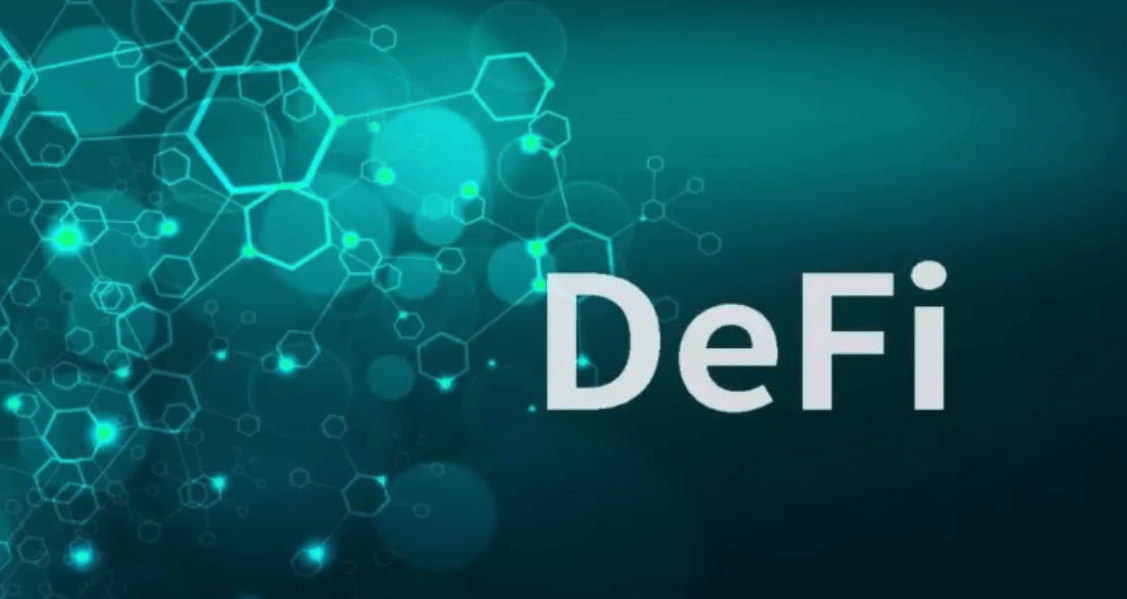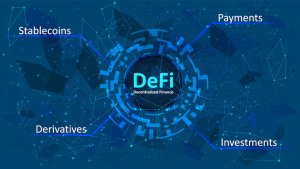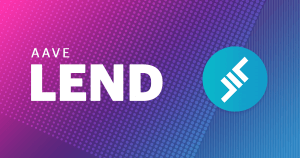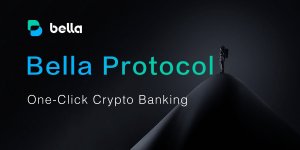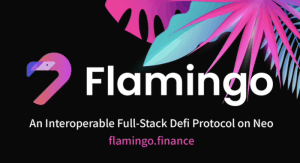Today’s finance landscape is inherently unequal – with millions locked out of opportunities due to their location, being undocumented, or having low economic means.
Few would have foreseen that the technology that brought us Bitcoin could potentially solve this enduring problem.
Decentralized finance (DeFi) is all of these things: an idea, a belief system, a movement, and a blockchain-based technology that promises to eradicate the aforementioned barriers to financial access, or to put it another way, to democratize finance. Already, decentralized finance is making waves as DeFi platforms and products increase by the day.
In this guide, we explore some uses cases of this new and exciting technology, as well as some of the real-life applications that are making brave inroads into the space.
But before we do that, let’s kick off with a primer on what exactly DeFi is, plus why we need it.
What is Decentralized Finance?
Decentralized finance is an emerging, blockchain-based ecosystem of finance that seeks to expand finance.
It aims to make financial services more accessible and inclusive for everyone by making financial markets and products open-source, transparent, and under no particular authority.
In DeFi world, everyone would have absolute control over their assets and interact with other participants through peer-to-peer (P2P), decentralized applications (DApps).
What Problems Does DeFi Solve?
DeFi’s chief goal is to decentralize financial services and make them available to all – an aspect that today’s centralized financial system is sorely lacking. As such, DeFi solves two main problems which we’ll look at in greater detail below:
Inequality in Finance. Today, millions of people are locked out of access to loans, mortgages, a bank account, savings, insurance, and so on. DeFi aims to eradicate or alleviate this problem by creating a finance system that has no systemic or institutional barriers. All one would need is a smartphone and internet connectivity to access services.
Financial Censorship. Today’s centralized finance system means that governments, banks, or intermediaries can restrict or prevent an individual’s or a company’s access to their assets. For example, the government could freeze the assets of a company that openly defies it, or an individual that it perceives to be rogue. By contrast, with DeFi, financial products are under no one’s control. Hence no one can arbitrarily restrict an individual’s or company’s assets.
What Are the Advantages of DeFi?
Why should you care about DeFi? What difference does it propose to the current financial system? These are some of the advantages of DeFi:
Autonomy: DeFi applications do not need a go-between party in transactions or an arbitrator in case of disputes. All terms are set in the code, and users have complete autonomy over their funds at any time. This eliminates the costs that would go into providing such intermediary services.
Security: Since DeFi services are set up on decentralized blockchains, single points of failure are eliminated. Data is recorded on the blockchain and distributed across computers all over the world, reducing the chances of services being compromised.
Tradability: Thanks to DeFi, the tokenization of assets is now possible. Tokenization means one can quickly sell an asset that was previously illiquid (not fast-moving), as well as divide an asset into parts that enable many market participants to buy just the portion they can afford, instead of losing out on a whole investment.
Accessibility. The world’s unbanked can access financial services that they previously couldn’t, thanks to DeFi.
What Are The Use Cases For DeFi?
The following are some of the potential use cases for DeFi:
i. Payments
DeFi platforms or applications can be used to create blockchain-based protocols that allow individuals to have wallets via which they can make instant and cheaper payments.
ii. Borrowing and Lending
DeFi enables open lending structures that have numerous advantages over the traditional borrowing and lending system, including:
- Ultrafast transaction settlements
- Ability to back up digital assets with real-life assets
- Credit checks are not necessary; hence more people can get access to loans
- Potential standardization and interoperability of financial services, making them frictionless across various providers
- Democratizes the borrowing and lending process by providing borrowers with a wider pool of potential lenders.
iii. Stablecoins
A stablecoin is an asset that attempts to circumvent the price swings in cryptocurrencies, making them suitable as mediums of exchange and stores of value. Stable coins thus provide the stability associated with fiat currencies while maintaining the benefits of cryptocurrency such as security, fast processing speeds, and overall efficiency.
iv. Tokenization
This is the process of digitizing a real-world asset to increase its liquidity in the marketplace. Tokenization creates asset-backed tokens – which are digital tokens backed by real-world assets. Through tokenization, assets that traditionally have low liquidity, e.g., jewelry, real estate, and art, can quickly move their position in the marketplace. Also, thanks to the ability to divide assets into portions through tokenization, non-high income earners can get a piece of a product or investment that they previously couldn’t afford.
v. Decentralized Exchanges (DExes)
Decentralized exchanges are platforms where users can exchange digital assets without relying on a third party, as in a centralized exchange. Instead, trades occur between parties in a P2P, automated process. Examples of DExes include Binance DEX, Radar Relay, and EtherDelta.
vi. Issuance Platforms
An issuance platform is a service that allows people to tokenize their assets by providing them with the tools to create digital tokens. An issuance platform provides the necessary technical and legal infrastructure to ensure a seamless tokenizing process for users.
Thanks to these platforms, individuals and companies can raise funds without the costs associated with intermediaries such as banks, credit unions, lawyers, etc. They also open up investment opportunities for investors of all net worth levels, origin, or geographical location.
vii. Open Marketplaces
With open marketplaces, DeFi reimagines the age-old idea of a marketplace by turning it into a decentralized platform where people can exchange things of value.
People can buy and sell non-fungible tokens (ones that are unique and thus not interchangeable, as opposed to fungible tokens such as Bitcoins that are interchangeable) such as trading cards, collectibles, domain names, game items, and so on. All transactions take place via blockchain-based smart contracts, removing the need for a central authority who would normally dictate the rules of the marketplace.
viii. Prediction Markets
A prediction market is a group of participants who speculate on the outcome of future events – from elections to games to weather to natural disasters to commodity prices to major political events.
DeFi provides a decentralized take on traditional betting markets such as casinos. Decentralized prediction markets are censorship-resistant, thus democratizing the betting space. For instance, individuals can participate in betting on their favorite sports events even if they live in jurisdictions where betting is restricted. It also means that anyone can create a bet without the approval of a central authority like, for instance, the administrator of a betting platform.
ix. Decentralized Autonomous Organizations (DAOs)
These are organizations that allow individuals to create organizations whose rules and bylaws are encoded on the blockchain. DAOs represent the highest degree of organizational transparency, with every process automated and with minimal to no human input needed. They solve the problems of centralized, hierarchical setups such as corruption, arbitrary decision making, delayed decision making, and so on.
Real-Life Applications of DeFi
The DeFi world is up and running with applications that are already making their impact felt. The following are some of the most popular DeFi use cases out there today:
☑️MakerDAO. This is a decentralized autonomous organization running atop Ethereum’s blockchain. It has a dual coin system that aims to mitigate the volatility of cryptocurrency. The MakerDao platform has two tokens: Maker – which is volatile and fluctuates like any other crypto and is used to govern the Maker platform, and DAI, a decentralized stablecoin whose value is fixed in a 1DAI = 1USD formula. Makercoin utilizes external market economics to allow DAI to be a stablecoin.
☑️Dharma Protocol. This is a finance application based on the Ethereum blockchain that democratizes borrowing and lending. As a lending platform, Dharma has all the works of a traditional lending platform – except that it expands finance in that anyone, anywhere, can access the Dharma platform as long as they have an internet connection.
☑️Uniswap. Uniswap is an Ethereum blockchain-based decentralized exchange that allows individuals to trade ether and ERC-20 tokens. Thanks to its decentralized protocol, there is no need for middlemen – which saves costs, and users have complete autonomy over their crypto holdings.
☑️Bloom. Also, Ethereum-based, Bloom is a credit scoring and identity verification platform that aims to reduce credit fees, increase credit access, make credit histories shareable across countries, and make credit risk assessment fairer. Through Bloom, individuals with little to no credit stand a better chance to get access to loans.
☑️dYdX This is a DEx that allows traders to exchange cryptocurrency derivatives. Derivatives are financial instruments that derive value from an underlying asset, e.g., Bitcoin futures. Via dYdX, traders can exchange their crypto derivatives of choice in a censorship-free, peer-to-peer, and fairly priced environment.
Final Thoughts
By creating a financial system that’s open to all, accessible, affordable, and transparent, DeFi promises to wrestle economic power from those at the top and give it back to the people. And it proposes a powerful use of blockchain technology – decentralized financial services ranging from lending to asset issuance, to open marketplaces, to prediction markets, to censorship-free crypto exchanges, and more.

